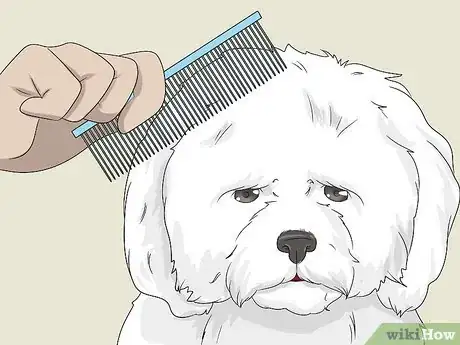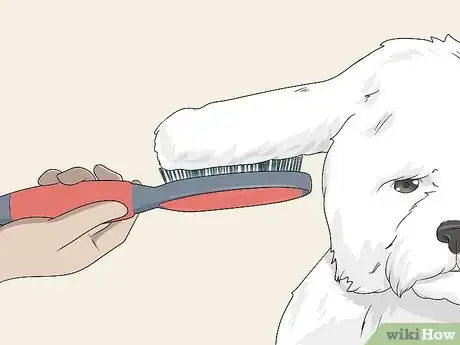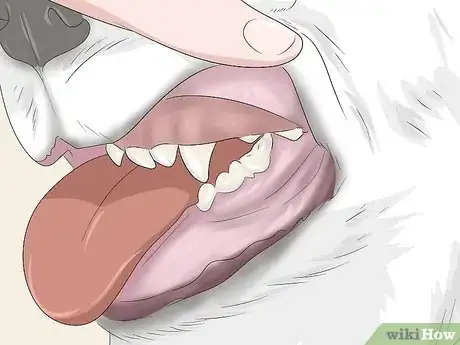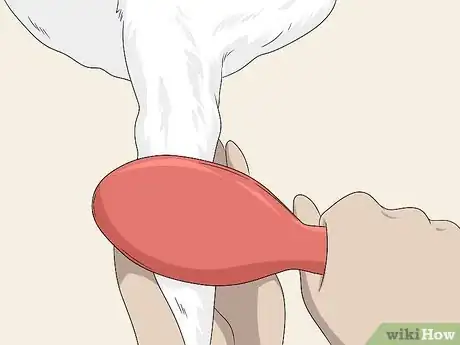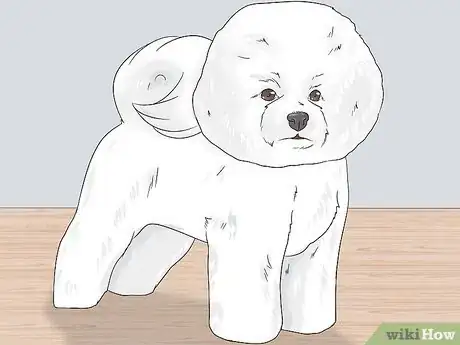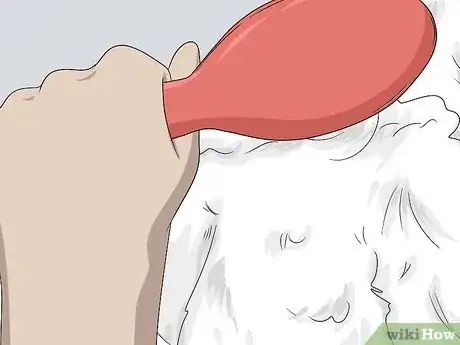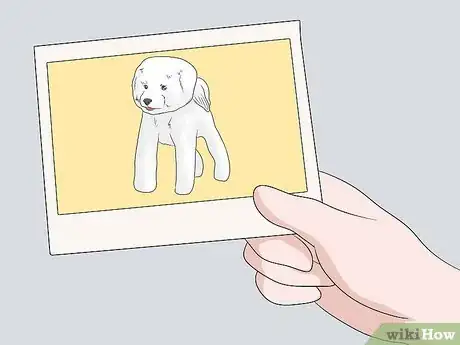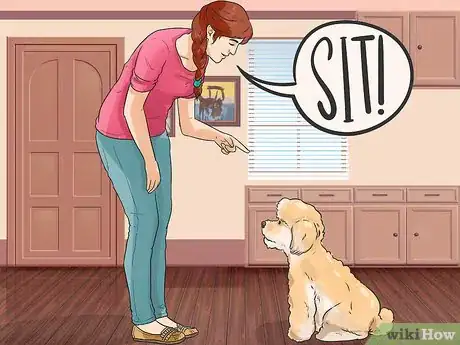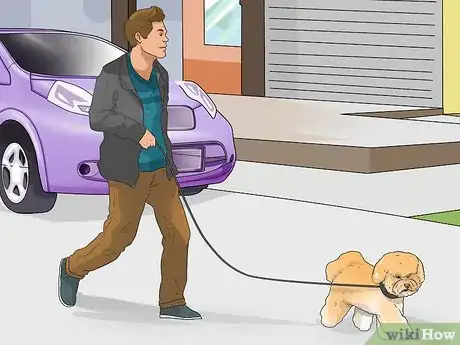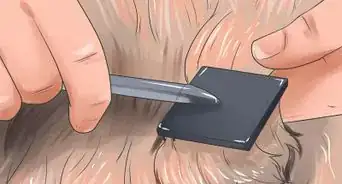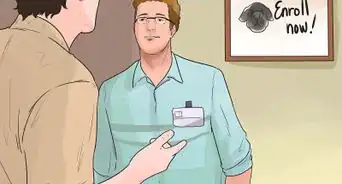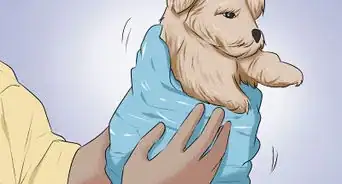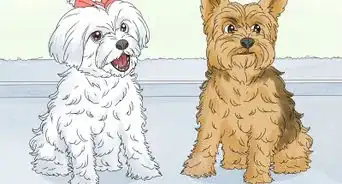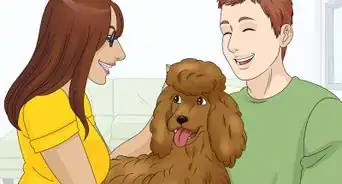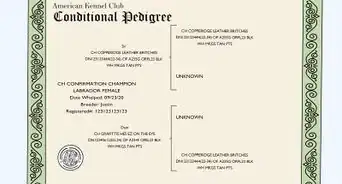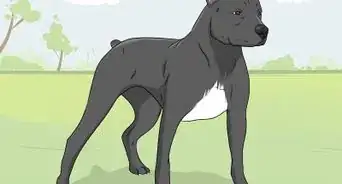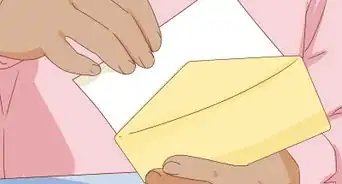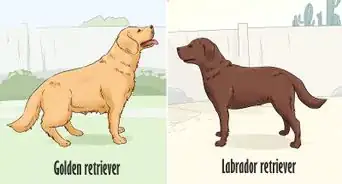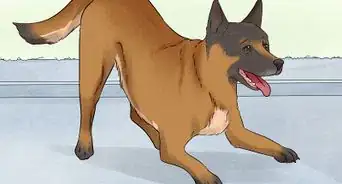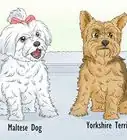This article was co-authored by Lauren Novack. Lauren Novack is a Certified Dog Behavior Consultant at Behavior Vets NYC where she helps fearful, anxious, and aggressive pets and their owners. She has completed coursework for her MS in Applied Behavior Analysis at Hunter College. Lauren’s research explores the intersection between training practices and animal welfare. She currently serves on the Editorial Advisory Board for Daily Paws and has appeared on Fox & Friends, Rachel Ray, and various news outlets with her dog Grayson.
This article has been viewed 14,058 times.
Bichon Frises are small-sized dogs and are a member of the non-sporting group.[1] Despite originally being from Spain, these small dogs are often thought of as French.[2] Bichon Frises share some traits with other dogs, but by recognising their key traits, Bichon Frises can be more easily identified. This wikiHow will help you know whether or not a dog is a Bichon Frise.
Steps
Inspecting Body Structure
-
1Check the dog's size. Bichon Frises are fairly small in size. They are only 9.5–11.5 inches (24.1–29.2 cm) tall, and weigh from 12–18 pounds (5.4–8.2 kg).[3]
-
2Notice the dog's eyes. A Bichon Frise has black or dark brown eyes which are rounded in shape. They have very dark brown or black rims around their eyes called halos, which enhance the dog's expression. [4]Advertisement
-
3Find the ears. Bichon Frises have drop ears which are covered with long flowing hair. The ears are set slightly above eye level and closer to the front of the head. When the dog is alert, the ears will generally frame the face.[5]
-
4Look at the muzzle. A Bichon Frise has a medium muzzle which is slightly chiseled under the eyes, but not so much to make the dog look snippy or weak. The nose and lips are black; the nose being more prominent on the face.[6]
-
5Identify the tail. Bichon Frises have well plumed tails that are curved gracefully over the back, where it rests. The tail should be set on level with the topline, and generally not low set.[7]
-
6Examine the overall structure. Bichon Frises have a long, arched neck which is carried proudly and blends smoothly into the shoulders. The shoulders are laid back to fairly near a 45 degree angle. The legs are of medium bone and are straight, with no curve or bow in the wrist or forearm. The hind legs have muscular thighs and are spaced moderately wide.[8]
Looking at the Coat
-
1Check how the coat looks and feels. The Bichon Frise has a double coat: a soft and dense undercoat and an outer coat of courser and curlier texture. When bathed and brushed, the coat will stand off from the body, giving a powder-puff appearance.[9]
-
2Identify the coat colour. Bichon Frises are white, although they may have apricot, buff, or cream shadings around the ears or on the body.[10]
-
3Notice the 'cut'. Some people choose to give their Bichon Frise specific haircuts rather than just keeping it the standard cut. Some of these cuts may include the Utility cut, the Puppy cut, the Show cut and the Panda Puppy cut.
- The Utility cut appears as a clipped body with slightly more length around the ears.
- The Puppy cut is seen as longer hair on the tail and head than the rest of the body.
- The Show cut is cutting to meet show standards, such as leaving the hair around the head puffy and keeping the hair everywhere fairly lengthy.
- The Panda Puppy cut is seen as similar to the Puppy cut (as the name implies) but is left longer around the head, ears, and legs.
Checking the Temperament
-
1Watch for playfulness. Bichon Frises are very playful and easygoing; they'll always look for something to do even when they're indoors. This trait also helps them get along well with children.[11]
-
2Check if the dog is fast-learning. A Bichon Frise is often a very fast learner, because of how playful they are. They can generally learn tricks really fast, which is something a lot of people love about them.[12]
-
3Look for separation anxiety. As playful and easygoing as the Bichon Frise is, they are very sensitive. The dog won't ever want their owner to leave them and will demand attention whenever they can. A Bichon Frise won't want to be left alone and will try to come with their owner whenever they're going out.[13]
-
4Be wary of aggressive dogs. Bichon Frises may be prone to Small Dog Syndrome and may display signs of fear aggression. This is because they may feel threatened and overreact with aggression; however, by training them with attention and love, this is less likely to be an issue.[14]
- Keep in mind that small dogs need the same enrichment, exercise, training, and mental outlets as larger dogs.
-
5Recognize attentiveness. Known for being attentive and alert, a Bichon Frise can make a great watchdog. They may also excel at certain activities such as agility.[15]
Community Q&A
-
QuestionWhy is my bichon frise's nose long and square?A bichon frise's muzzle appears a bit triangular, and the nose is prominent. With the dog's strong jaws, however, the muzzle may imitate the appearance of a square and seem somewhat long with a 3:5 ratio of muzzle size to head size. If the muzzle is overly long or appears snipy though, the dog might be a mixed breed.
-
QuestionWhy does my bichon frise have a brown nose instead of a black one?For show, a bichon frise must have a solid black nose, but in actuality, it is possible for one to have a brown or pink nose. A bichon frise's nose sometimes lightens in color when it is colder outside and grows darker when it is warm outside, so their brown nose may be a result of this natural pigmentation altering. Additionally, if the dog has been spayed or neutered, another trait that may occur in a bichon frise is their pigmentation lightening following the neutering procedure.
References
- ↑ https://www.akc.org/dog-breeds/bichon-frise/
- ↑ https://www.akc.org/dog-breeds/bichon-frise/
- ↑ https://www.akc.org/dog-breeds/bichon-frise/
- ↑ http://images.akc.org/pdf/breeds/standards/BichonFrise.pdf
- ↑ http://images.akc.org/pdf/breeds/standards/BichonFrise.pdf
- ↑ http://images.akc.org/pdf/breeds/standards/BichonFrise.pdf
- ↑ http://images.akc.org/pdf/breeds/standards/BichonFrise.pdf
- ↑ http://images.akc.org/pdf/breeds/standards/BichonFrise.pdf
- ↑ http://images.akc.org/pdf/breeds/standards/BichonFrise.pdf
- ↑ http://images.akc.org/pdf/breeds/standards/BichonFrise.pdf
- ↑ https://www.dogtemperament.com/bichon-frise-temperament/
- ↑ https://www.dogtemperament.com/bichon-frise-temperament/
- ↑ https://www.dogtemperament.com/bichon-frise-temperament/
- ↑ https://www.dogtemperament.com/bichon-frise-temperament/
- ↑ https://www.dogtemperament.com/bichon-frise-temperament/

